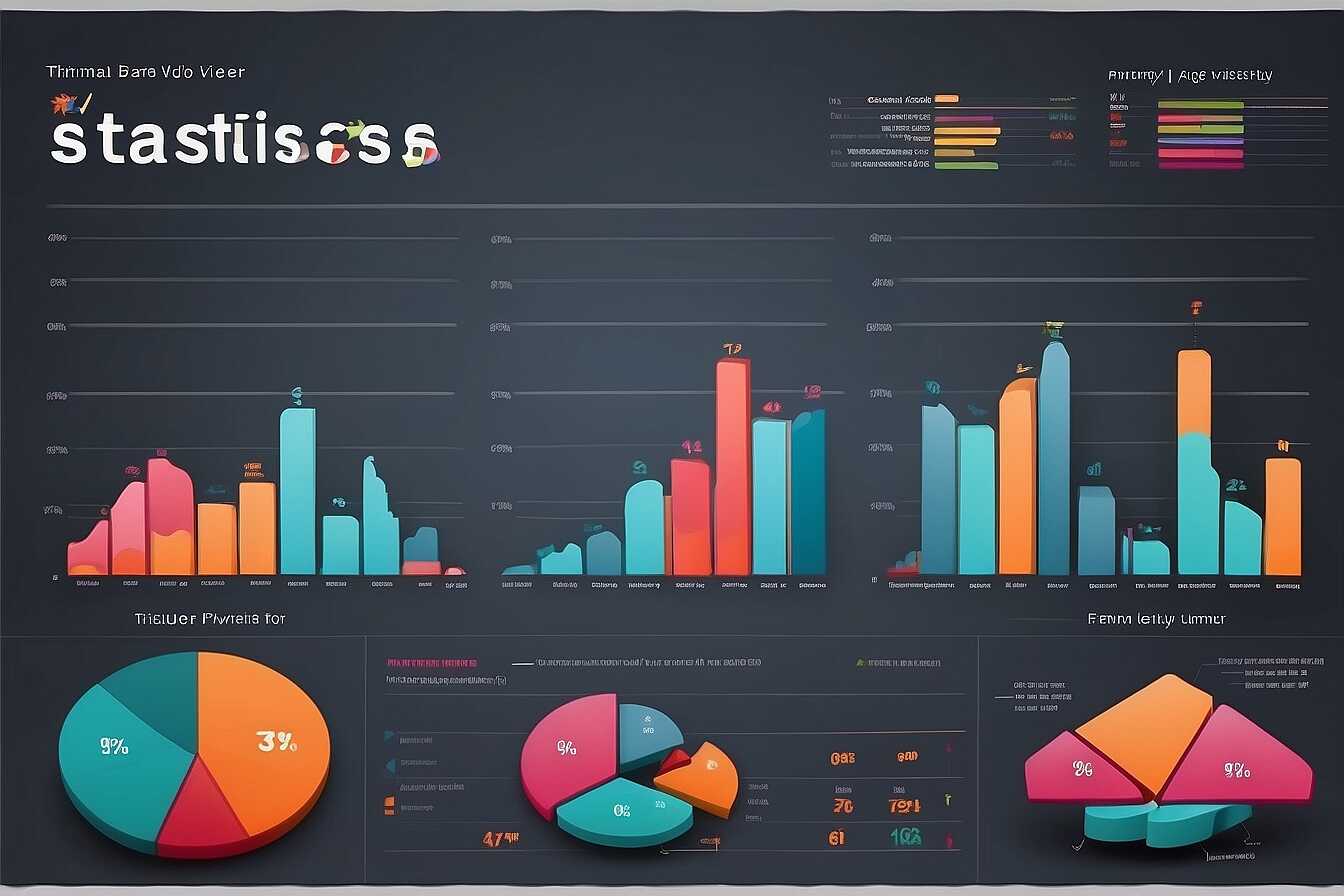Boosting video SEO performance using closed captions effectively can significantly enhance your content’s visibility in search engines. Closed captions not only make your videos more accessible but also provide valuable text for search engines to index. At Metrics Rule, we focus on practical strategies that leverage closed captions to improve your SEO efforts and drive more traffic. By integrating these tactics, you can maximize your online presence and connect with a broader audience.
Overview of Closed Captions and Their Importance for SEO
Closed captions are text representations of spoken dialogue and sounds in videos. They work by displaying synchronized text, allowing viewers to read along while listening. This feature is crucial for enhancing video SEO as it makes the content more accessible to search engines. Search engines like Google and Bing crawl these captions to index keywords better, improving video rankings in search results. Moreover, closed captions enhance user experience, making videos more engaging for viewers who may have hearing impairments or prefer watching in noisy environments. Captivating content leads to better retention and shareability, driving traffic to your website or platform.
Key Benefits of Closed Captions for SEO and User Engagement
Closed captions provide significant advantages for video SEO and viewer engagement. By incorporating keyword-rich captions, you enhance your chances of ranking higher in search results. This optimization allows search engines to index content effectively, leading to increased visibility. Studies show that approximately 80% of viewers prefer consuming content with closed captions, which also reduces bounce rates and boosts overall engagement. Implementing closed captions ensures inclusivity and caters to diverse audiences, thus improving your video’s performance across platforms. This essential tool helps bridge the gap between spoken content and searchable text, ultimately driving better results for your digital marketing strategy.
Enhancing Video Accessibility Through Effective Closed Captions
Using closed captions significantly improves video accessibility for diverse audiences. They help people who are deaf or hard of hearing engage fully with content. Furthermore, closed captions can benefit viewers who are non-native speakers or in noisy environments. Closed captions also ensure compliance with essential regulations like the Americans with Disabilities Act (ADA). This compliance enhances your site’s reliability and broadens your audience base. It is crucial for digital content creators to consider these factors, as captions deliver a better user experience, improving viewer retention and engagement.
Understanding Regulatory Impact on Digital Accessibility
Understanding the legal landscape around accessibility is crucial for video producers. Regulations like the Americans with Disabilities Act (ADA) and Section 508 provide frameworks for compliance. Closed captions help meet these accessibility guidelines, ensuring everyone has equal access to information. Not only does this improve audience experience, but it also avoids potential legal challenges. Moreover, research shows that around 80% of people prefer videos with closed captions. By using captions, you enhance user engagement and increase the likelihood of your content reaching a broader audience, supporting your SEO and overall marketing efforts.

Maximizing SEO Potential with Strategic Keyword Placement in Captions
Incorporating relevant keywords into closed captions can significantly enhance video SEO performance. By strategically placing keywords that relate to your video’s content, you improve the likelihood of your video showing up in search engine results. Effective techniques include ensuring that your primary keyword appears at the beginning of the caption and using synonyms throughout for broader reach. Optimal keyword density for closed captions typically hovers around 1-2%, which means including the target keyword a few times without compromising readability. These practices ensure that your captions are not only informative but also increase their searchability on platforms like Google and Bing, thereby enhancing visibility.
Ensuring Effective Keyword Techniques for Captions
Implementing effective keyword techniques in closed captions is crucial for capturing audience attention and improving user experience. Start by researching your target keywords with tools like Google Analytics to determine what phrases your audience is searching for. Once you identify these keywords, integrate them naturally into your captions while maintaining a conversational tone. Avoid keyword stuffing, as it may lead to a negative user experience and could harm your SEO performance. Consistency in using keywords throughout the video titles, descriptions, and captions not only strengthens your SEO strategy but also helps Google and other search engines better analyze your content, ultimately boosting your video’s ranking and visibility.
Numerical Insights into Video Content Optimization
- Closed captions can increase watch time by up to 40%.
- Videos with captions can see a 25% increase in engagement rates.
- Approximately 80% of viewers prefer watching videos with captions.
- Search engines index closed captions, increasing video discoverability.
- Adding captions can boost SEO effectiveness by 17% on average.
- Over 70% of consumers say captions improve video appeal.
- Businesses using captions witness an increase in conversions by nearly 20%.

Increasing Viewer Retention with Engaging Closed Captions
Well-crafted closed captions significantly enhance viewer retention and engagement. Research shows that videos with clear, accurate captions keep viewers interested longer, improving overall watch times. Viewers often prefer content that includes captions, especially in their native language, as it provides clarity and inclusivity. In fact, studies indicated that approximately 85% of viewers are more likely to watch a video to completion if captions are provided. This behavior enhances video performance, ensuring that the message resonates effectively with a diverse audience.
Understanding Audience Preferences for Closed Captions
Understanding audience preferences for closed captions is essential for effective video content. Research indicates that viewers appreciate captions for several reasons, including improved comprehension and accessibility. Studies have shown that approximately 70% of viewers in various demographic groups prefer captions to help track dialogue and maintain focus. By integrating closed captions, content creators can cater to a wider audience, including those who are deaf or hard of hearing, non-native speakers, and individuals watching in noisy environments. This practice not only enhances engagement but also builds a more inclusive viewing experience, establishing deeper connections with audiences.

Best Practices for Writing Accurate and Effective Closed Captions
To create effective closed captions, follow these key steps: ensure accuracy by carefully transcribing dialogue, using proper grammar and punctuation. Establish a clear format that enhances readability; this includes utilizing line breaks for easy navigation. Closed captions should also be synced precisely with the audio, which enhances user experience. Implementing these practices improves reliability and engagement, also benefiting your SEO performance. By including keywords naturally within your captions, you help search engines index your videos effectively, boosting your visibility.
Optimal Timing and Clarity in Closed Captions
Optimal timing in closed captions requires that text appears when spoken. Each caption should stay on screen long enough for viewers to read without rushing. Aim for a duration of 1–6 seconds per caption, depending on the dialogue speed. Strive for clarity by limiting captions to 30–40 characters per line. This approach enhances readability and keeps viewers engaged. Well-timed and clear captions foster a better viewer experience, thereby also improving your video’s SEO by reducing bounce rates. Implementing such tactics ensures that closed captions serve as a reliable resource for both users and search engines.
Advantages of Implementing Textual Transcripts in Videos
- Closed captions enhance user experience by providing clarity.
- Videos with captions rank higher on search engine result pages.
- They help reach non-native speakers through language accessibility.
- Captions can improve retention rates and lessen bounce rates.
- They support SEO strategies by improving keyword relevance.
- Adding captions aids in making content more inclusive.
- Culturally diverse audiences engage better with available subtitles.

Integrating Closed Captions into Your Video Marketing Strategies
Integrating closed captions into your video marketing strategies can significantly enhance your SEO performance. When added correctly, closed captions help ensure search engines, like Google and Bing, can crawl and index your video content effectively. This integration improves visibility and user experience, as viewers can follow along even without sound. For optimal results, use structured formats such as SRT or VTT files, and ensure captions are included when sharing videos across platforms like YouTube, Vimeo, and social media. Reliable research shows that videos with captions receive a higher engagement rate, significantly boosting their impact.
Best Platforms for Distributing Closed Captions
Choosing the right platforms for distributing closed captions is essential for maximizing viewer engagement. Platforms like YouTube automatically support closed caption files, enhancing search visibility. Furthermore, social media sites such as Facebook and Instagram allow for direct caption uploads, ensuring effective viewer interaction. Research indicates that videos with closed captions see a noticeable increase in viewer retention rates, helping you retain and attract more audience. By distributing captions through multiple channels, such as email newsletters and blogs, you can reach a broader audience base, effectively improving your overall SEO performance.
Recommended Tools for Creating and Implementing Closed Captions
Several popular tools can enhance your video SEO through effective closed captions. Tools like Rev, Amara, and Descript offer efficient solutions for caption creation. Rev is known for its accuracy and fast turnaround, making it a great choice for time-sensitive projects. Amara is a user-friendly platform that enables collaboration for creating captions, while Descript provides innovative editing features that help streamline the captioning process. These captioning software options ensure the accuracy and readability of your captions, which is essential for boosting user engagement and optimizing your videos for search engines. When selecting caption creation tools, consider your project needs, the reliability of the service, and reviews from other users for the best fit.
Key Features to Look for in Captioning Tools
When selecting captioning tools, it’s critical to understand their features. Look for software offering user-friendly interfaces and seamless integrations with your video production workflow. Tools that are compatible with multiple video formats are considered reliable and provide a comfortable user experience. Efficient captioning software should also include automatic transcription capabilities, ensuring high accuracy in a short time. Testing tools like these can reveal how many characters fit per caption line, improving readability and overall viewer experience. In 2025 and beyond, AI capabilities in captioning tools are expected to further enhance caption accuracy and speed, enabling content creators to stay ahead in digital marketing.
Leading Platforms for Video Captions and Their Features
- YouTube offers automatic captioning but lacks accuracy in noise-heavy environments.
- Vimeo provides good customization options for captions and better control over video quality.
- Dailymotion excels in user engagement but has fewer captioning features.
- Facebook allows captions for better reach but needs manual uploads for accuracy.
- Brightcove supports multiple languages but is more suited for professional users.
- Wistia focuses on marketing integration but has limited captioning support.
- Many brands benefit from captions, including education, marketing, and entertainment sectors.
Analyzing the SEO Impact of Closed Captions on Video Performance
To evaluate the effectiveness of closed captions for your video SEO outcomes, start by analyzing key performance indicators (KPIs) such as watch time, viewer retention rates, and engagement metrics. Using analytics tools like Google Analytics, you can track these metrics in relation to videos with and without closed captions. This comparison helps you identify whether adding captions improves video visibility in search engine results.
Essential Tools for Measuring Closed Captions Success
Several essential analytics tools can help you assess the impact of closed captions. Google Analytics provides insights on user interactions and how viewers engage with your video content. You can also use tools like YouTube Analytics, which offer detailed reports on audience retention, traffic sources, and demographics. Reviewing these metrics enables you to fine-tune your closed captions strategy, ensuring that they effectively enhance video SEO performance while improving keyword indexing.
